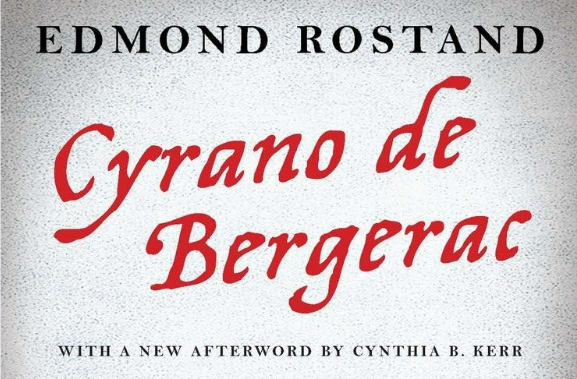Scene 3. I.
byScene 3. I. takes place in a picturesque square in the old Marais district, a setting filled with historical charm, where narrow streets and ancient houses create an atmosphere of timeless beauty. The focus is on Roxane’s residence, which stands out due to its lush garden and a balcony that can be accessed from the street. A bench placed in front of her house becomes a meeting point for the characters, setting the stage for the interaction that follows.
The scene opens with Ragueneau, dressed in servant attire, engaging in a conversation with the duenna, where he shares his personal history of woe that led him to work for Roxane. His tale of financial ruin, driven by misplaced affections, is one of both misfortune and redemption, with Cyrano de Bergerac playing a pivotal role. Cyrano’s timely intervention saves Ragueneau from a dire fate, securing him a position with Roxane, illustrating the interconnectedness of their lives and Cyrano’s inherent kindness in helping those around him.
Roxane, from her window, joins the duenna in a brief exchange about their upcoming visit to Clomire’s house, where an intellectual discussion on the Tender Passion is set to take place. This conversation reveals their eagerness for the intellectual salon, providing a glimpse into the cultural and intellectual pursuits of the nobility. Through this, the narrative reflects the social dynamics and the intellectual inclinations that define the circles they frequent.
The arrival of Cyrano, accompanied by two pages who carry arch-lutes and appear more as jesters than musicians, introduces a lighter, more whimsical note to the scene. Cyrano’s wager with D’Assoucy, which leads to him temporarily acquiring the services of the pages, adds a layer of humor to the narrative, while also highlighting Cyrano’s eccentric character. This interaction emphasizes the multifaceted nature of Cyrano—an individual who embodies roles as diverse as soldier, poet, and philosopher, each contributing to his complex personality.
The scene subtly weaves themes of love, art, and existential dilemmas through the rich interactions of the characters. Roxane’s anticipation for the evening’s intellectual pursuits, Ragueneau’s mixture of gratitude and tragedy, and Cyrano’s playful yet profound demeanor create a broad spectrum of human emotion and experience. The setting in the Marais district, with its historical depth and picturesque architecture, enriches the unfolding drama, providing a vivid backdrop for the personal and intellectual journeys of the characters.
Cyrano’s character is particularly central in this chapter, where his playful, outwardly humorous actions often mask deeper philosophical musings and emotional complexity. The pages, while providing musical entertainment, also serve as a metaphor for the way Cyrano blends jest with seriousness, combining his intellectual pursuits with his whimsical, often eccentric actions. This fusion of humor and depth invites the audience to reflect on the many layers of Cyrano’s character, where lightheartedness and seriousness are never far apart.
The theme of love also takes a more nuanced turn in this scene, where Cyrano’s affections for Roxane remain hidden behind his wit and actions, showcasing the complexity of unspoken love. Ragueneau’s gratitude for Cyrano’s intervention, coupled with his own feelings of loss, adds a touch of melancholy to the scene. The chapter reveals the intricacies of love—its power to uplift, its ability to cause tragedy, and its often unspoken nature—through the subtle interactions and shifting dynamics between the characters.
This chapter sets the stage for further emotional and intellectual exploration, with Cyrano’s eccentricity and Roxane’s cultural pursuits providing a foundation for the deeper themes that will emerge. The blending of intellectual pursuits, love, and humor creates a dynamic narrative, where each character’s journey is shaped by their interactions with one another. Through these layered exchanges, the audience is invited to delve into the complexities of human relationships, the clash of personal desires and societal expectations, and the ways in which individuals navigate the tension between personal and collective aspirations.


